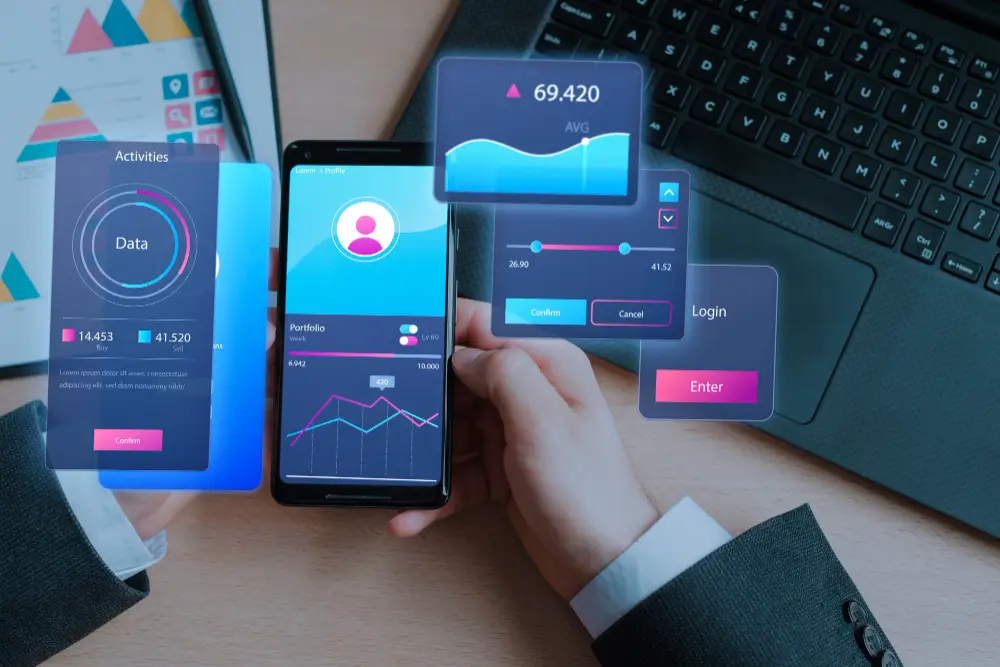As mobile internet usage continues to rise, optimizing landing pages for mobile devices has become essential for businesses looking to maximize conversions. Mobile users have unique needs and behaviors, and a well-designed mobile landing page can significantly enhance user experience and drive higher engagement. In this article, we’ll explore best practices and considerations for designing mobile landing pages that optimize conversions.
The Importance of Mobile Optimization
Mobile devices account for a significant portion of internet traffic. According to Statista, mobile devices (excluding tablets) generated 54.8% of global website traffic in the first quarter of 2021. This trend underscores the importance of ensuring that your landing pages are mobile-friendly. A seamless mobile experience can reduce bounce rates, increase time on site, and ultimately drive more conversions.
Best Practices for Designing Mobile Landing Pages
1. Prioritize Speed

Page load speed is crucial for mobile users. Slow-loading pages can frustrate users and lead to high bounce rates. According to Google, 53% of mobile site visits are abandoned if a page takes longer than three seconds to load.
Tips for Improving Speed:
- Optimize Images: Use compressed images to reduce load times without sacrificing quality.
- Minimize HTTP Requests: Reduce the number of elements on your page to speed up loading.
- Use Lazy Loading: Implement lazy loading for images and videos to load content only when it’s needed.
2. Simplify Navigation

Mobile screens are smaller, so it’s essential to keep navigation simple and intuitive. A cluttered or complex navigation menu can overwhelm users and make it difficult to find information.
Tips for Simplifying Navigation:
- Use a Hamburger Menu: A hamburger menu can keep your layout clean and provide easy access to navigation options.
- Sticky Navigation: Implement sticky navigation that stays visible as users scroll down the page.
- Minimize Menu Items: Limit the number of menu items to the most essential links.
3. Optimize for Touch

Mobile users interact with screens using touch gestures, so it’s important to design your landing page with touch optimization in mind.
Tips for Touch Optimization:
- Button Size and Placement: Ensure buttons are large enough to be easily tapped and placed where thumbs can comfortably reach them.
- Spacing: Provide adequate spacing between interactive elements to prevent accidental clicks.
- Touch-Friendly Forms: Use mobile-friendly input fields and consider implementing auto-fill options.
4. Focus on Readability

Text must be easy to read on small screens. If users have to pinch and zoom to read your content, they’re likely to leave the page.
Tips for Enhancing Readability:
- Font Size: Use a minimum font size of 16px for body text to ensure readability without zooming.
- Line Height: Increase line height for better readability and to avoid text crowding.
- Contrast: Ensure sufficient contrast between text and background to enhance readability.
5. Use a Single Call to Action (CTA)

A single, clear CTA can prevent user confusion and improve conversion rates. Mobile users should immediately understand the desired action without being overwhelmed by multiple options.
Tips for Effective CTAs:
- Visibility: Make the CTA button prominent and easy to find.
- Simplicity: Use concise and action-oriented language.
- Placement: Position the CTA above the fold and repeat it further down the page for long-scrolling content.
6. Utilize Visual Content

Visual content such as images, videos, and infographics can be more engaging than text-heavy content on mobile devices. However, balance is key to avoid slowing down your page.
Tips for Using Visual Content:
- Responsive Images: Use responsive images that adjust to different screen sizes.
- Video Optimization: Optimize videos for mobile by using lightweight formats and enabling autoplay with mute.
- Visual Hierarchy: Use visual cues to guide users’ attention to important information and CTAs.
Considerations for Mobile Conversion Optimization
1. A/B Testing
Regular A/B testing can help you identify what works best for your mobile audience. Test different headlines, CTAs, layouts, and images to see which variations drive the highest conversions.
2. Mobile Analytics
Use mobile-specific analytics to gain insights into user behavior. Tools like Google Analytics can help you track mobile traffic, bounce rates, and conversion paths, providing valuable data to optimize your landing pages.
3. Personalization
Personalize the mobile experience based on user data. Dynamic content that adjusts to user preferences, location, and behavior can make your landing pages more relevant and engaging.
Conclusion
Designing landing pages for mobile is crucial for optimizing conversions in today’s mobile-first world. By prioritizing speed, simplifying navigation, optimizing for touch, enhancing readability, focusing on a single CTA, and utilizing visual content, you can create a seamless and engaging mobile experience. Regular A/B testing, leveraging mobile analytics, and personalizing the user experience are essential for continuous improvement and conversion optimization.


